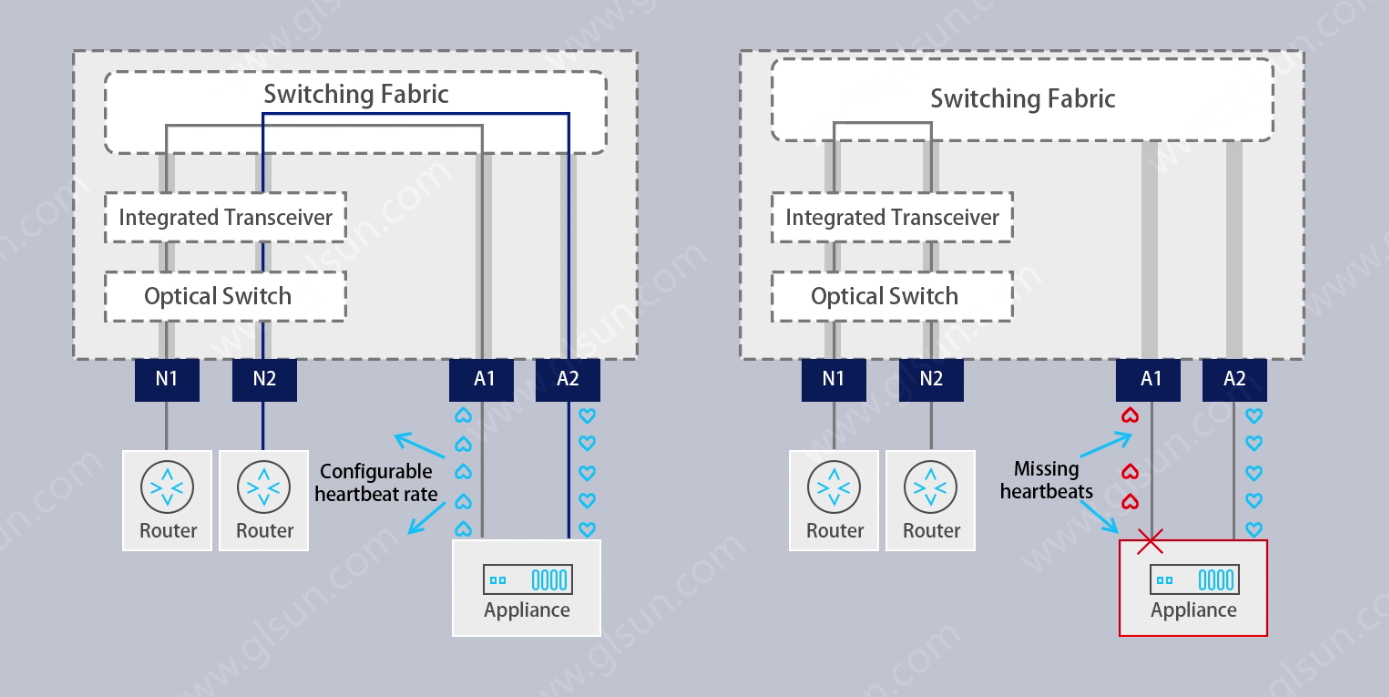How Fiber Bypass Modules Protect Inline Devices in Optical Networks?
2025-06-21
In the high-stakes world of modern digital infrastructure, ensuring network uptime and operational reliability is paramount. One technology that plays a critical yet often overlooked role in this mission is the Fiber Bypass Module, also known as an Optical Bypass Module. Designed to maintain optical signal continuity even when inline devices fail or lose power, these modules are now an integral part of telecommunication networks and data center architectures.
A Fiber Bypass Module is an optical device used to create an alternate light path around inline network equipment, such as optical switches, firewalls, or intrusion detection systems (IDS). In normal operation, the module routes the signal through the active device. When the device fails or loses power, the module automatically bypasses the device and maintains the fiber link between the upstream and downstream equipment.
This capability is critical in inline configurations, where a single device failure could otherwise interrupt an entire network segment.
Most fiber bypass modules operate through one of the following mechanisms:
> Passive Optical Switching using MEMS or mechanical relays
> Active Optical Switching triggered by device power or external control signals
> Fast failover systems that detect link failure and activate the bypass path within milliseconds

The module constantly monitors the presence of power or an optical heartbeat from the inline device. Upon detecting a fault condition, the bypass path is engaged, and traffic flows uninterrupted across the fiber link.
Why Fiber Bypass Modules Matter
As networks become increasingly mission-critical, downtime is no longer acceptable. Traditional high-availability setups often include redundant links or devices, but these solutions can be cost-prohibitive or complex to manage.
Fiber bypass modules offer a cost-effective, compact, and reliable alternative for ensuring continuity and fail-safe operation. They are particularly valuable in:
> Carrier-grade telecom networks, where five-nines (99.999%) availability is the gold standard
> Enterprise data centers, where real-time applications and massive data volumes demand uninterrupted connectivity
> Security-sensitive networks, where inline monitoring or security appliances are single points of failure
Applications in Telecom Networks
1. Protection for Inline Optical Equipment
In many long-haul and metro fiber deployments, devices such as optical amplifiers, ROADM units, and wavelength converters are deployed inline. These devices are mission-critical but also potential single points of failure.
Fiber bypass modules can be deployed before and after such devices to ensure that even if a unit malfunctions or loses power, the optical path remains intact.
2. Network Tap Bypass in Security Monitoring
Telecom carriers often deploy inline network taps for lawful interception, monitoring, or performance analysis. These taps are connected to probes or monitoring appliances.
If the monitoring equipment fails, it can break the link. Bypass modules allow the tap to be bypassed, preserving the optical connection while alerting operators about the issue.
3. Access Network Fail-Safes
In GPON or XGS-PON deployments, where OLTs (Optical Line Terminals) and ONU (Optical Network Units) must stay continuously connected, bypass modules serve as a safety mechanism when integrating third-party security or traffic analysis appliances.
They ensure that service to end users is not interrupted due to peripheral equipment failure.
Applications in Data Center Networks
1. Inline Firewall or Load Balancer Protection
In high-performance data centers, traffic is often routed through inline devices such as firewalls, DDoS protection units, or load balancers. These devices are critical for network performance and security, but they are also prone to failure due to power issues, software crashes, or hardware faults.
Bypass modules ensure that even if these devices go offline, the data center's core network traffic continues to flow without disruption.
2. Zero-Downtime Maintenance
When inline appliances need firmware updates, configuration changes, or physical replacement, taking them offline could interrupt live services. With a bypass module in place, the device can be taken out of service temporarily while the optical path is maintained via the bypass route.
This enables zero-downtime maintenance, a crucial feature for cloud service providers and hyperscale data centers.
3. Distributed Security Monitoring
As security operations become more distributed, inline IDS/IPS systems are increasingly deployed at strategic network points. In such designs, a failure of the IDS appliance could compromise visibility or break the link.
Fiber bypass modules ensure the continuity of traffic flow, while simultaneously alerting the NOC (Network Operations Center) that security visibility is lost—without interrupting mission-critical services.
Deployment Considerations
1. Insertion Loss and Optical Budget
Bypass modules introduce some level of insertion loss (typically <1dB), which must be accounted for in the network's optical power budget.
2. Switching Time
The module's failover switching time is a key performance metric. High-performance modules can switch in <10ms, ensuring nearly seamless traffic flow.
3. Form Factor
Bypass modules come in various form factors, including:
> 1U rack-mount units for telecom central offices
> Compact modules for inline deployment within server racks
> Custom integrable components for OEM equipment
4. Monitoring and Management
Advanced bypass modules offer SNMP-based monitoring, alarm signaling, and remote control, allowing centralized network management systems (NMS) to monitor bypass activity in real-time.
Fiber bypass modules are a powerful tool for guaranteeing network uptime, protecting inline devices, and simplifying maintenance workflows in both telecom and data center environments. Their adoption reflects a broader industry trend toward resilient and fail-safe architecture, especially in an era where digital services must be always-on.
Whether you're a network architect for a global telecom provider or managing infrastructure for a data-intensive enterprise, integrating fiber bypass modules into your network design is a strategic move that offers measurable improvements in reliability, safety, and service continuity.
If you're looking to implement optical bypass solutions tailored to your network's specific requirements, contact GLSUN to learn more about our high-performance Fiber Bypass Modules and other optical protection products.







